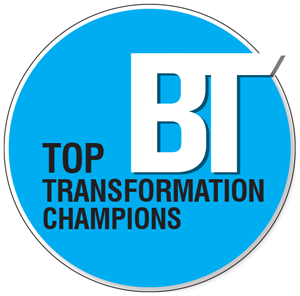Top Transformation Champions: Integrating technology with business goals

 A big drawback of many organisations can be their failure to understand the depth of digital transformation. The current trends of work-from-home, automation, etc. are sometimes mistaken for overall transformation. These are only elements of transformation.
A big drawback of many organisations can be their failure to understand the depth of digital transformation. The current trends of work-from-home, automation, etc. are sometimes mistaken for overall transformation. These are only elements of transformation.
Companies need to understand the distinct components of digital transformation, plan and then implement the concept across the organisation, be it in people or processes.
Transformation is a journey, and each milestone has a different set of criteria. Companies must draw their strategic plans and allocate the right resources, along with effective applications and software to achieve digital transformation.
Systems integrators such as Cloud Box Technologies can put together the correct blend of requirements to suit the customers’ needs within the budget, thanks to their vast experience and partnerships with world-class vendors.
At the start, every member of the organisation must have a good understanding of what are the changes that digital transformation will bring and how it will support daily activities. They need to understand how the transformation will increase productivity and efficiency, and thereby profitability.
Should there be a dearth of in-house competencies, systems integrators can offer consultancy to enable businesses to understand, strategise, plan and implement these technologies.
The transformation process may, however, need to be adjusted with the changes in technology and adjusted according to the customer’s business goals. Hence, one of the biggest challenges of digital transformation is cost estimation and budget.
It is also important that organisations understand the technology and how to adopt them for business gains. While they may be very attractive there has to be a balance of practicality in their adoption. Having key resources in place is a must while working towards digital transformation; the skills gap can prove to be a major hindrance.
Organisations must also keep an eye on technologies around the Internet of Things and the way it is changing. Another technology that goes hand in hand with IoT is Artificial Intelligent. The world is already witnessing the power of AI across manufacturing, healthcare, banking and finance, logistics, and retail sectors.
It is recommended that organisations tackle their growing business requirements and minimise their electronic footprint to achieve their sustainability goals. For example, they can reduce the carbon footprint of datacentres with efficient hardware and software that can have a significant impact on their objectives.
Yet another approach is to migrate to cloud solutions where on-prem assets are minimised and can have a positive impact on the sustainability journey. Several tools are available for organisations to choose from, and they can be used across the organisation not only within the manufacturing processes but also within the aspects of HR, logistics and supply chain, etc.
Key takeaways
- Many organisations misinterpret work-from-home and automation as digital transformation.
- Experts can help businesses to understand, strategise, plan and implement new technologies.
- Teams must understand how digital transformation will increase productivity and profitability.
- Organisations need to keep an eye on technologies around IoT and AI and the way it is evolving.






